- Home
- Patrick Robinson
Kilo Class (1998) Page 17
Kilo Class (1998) Read online
Page 17
Everyone laughed, and the President sat down next to Laura and poured himself a glass of sparkling water, which everyone was drinking. Bill marveled at the President’s ability to be smooth but not too smooth…Presidential but unfailingly able to say precisely the right thing to put everyone at ease.
Laura reacted to him as everyone who met him socially for the first time did. She and the President were soon talking about the long yacht journey she had just taken, and what fun it had been.
“You know,” he said, “I would love to do something like that. Just set off with a few good friends and vanish from civilization for a month. No phones, no faxes, no staff, no harassment, and no bullshit. Wouldn’t that be great? But it’s not going to happen anytime in the near future. I have to get back to work. Bill, Laura…I wish I could stay longer, but…I’m coming to the wedding, May twentieth, right? Tell your dad…I hope to see him, Laura.”
With that, he gulped his water and was gone. “Wow,” said Laura, shaking her head. “What a man. I adore Americans.”
Thirty minutes later, mid-roast beef, the telephone rang in the corner. “Hey, hey, hey,” said Arnold Morgan. “This could be George.”
He was right. Fort Meade on the line. “Hold it. George, let me just get a pen and a pad.”
The conversation was all of fifteen minutes long. Bill and Laura could only hear snatches. “What about the Soviets?…China?…No, that about wraps up the big players.”
When the call ended Admiral Morgan returned to the table looking serious. “They did a fast thorough job,” he said. “Checked out all of the computerized lists and all the latest overhead pictures, and drew some very sound conclusions. Mainly that every submarine in the United States, Russian, and Chinese Navies are accounted for. So is every one in the Middle East. All the small European fleets are solid, no one’s missing.
“Except for three boats. The Brits are missing a Trafalgar Class nuclear boat, Triumph, but we are nearly certain it’s patrolling off the Falkland Islands. They’re just not telling us for the moment, so it’s probably doing something it should not be doing. We can confirm if we have to, but the Royal Navy often has a submarine down there since the Falklands War, so we’re not surprised or suspicious.
“The French have a twelve-thousand-five-hundred-ton strategic missile submarine missing. She’s called Le Triomphant, number S616, based at Brest. Last detected in the Bay of Biscay, but not seen for ten days prior to February ninth. She’ll still be on the French deterrent patrol in the Bay somewhere. But from there to Kerguelen is around twelve thousand miles—even running at thirty knots, dived all the way from Biscay, there’s no way she could have gotten there in ten days or even twelve, or fourteen. I dismiss both of them.”
“And the third?” asked Bill.
“Almost too bizarre to think about. But we are showing a missing submarine from the Taiwan Navy. A small Hai-Lung Class diesel-electric. She’s called Hai-Hu.”
“As in Silver,” said Bill, deadpan.
Admiral Morgan chuckled. “No. As in Sea Tiger. Hai Lung means Sea Dragon. Anyway, this Dutch-built boat, eighteen years old, has been missing for a month and a half. She’s got a range of ten thousand miles and could conceivably have got down there. Kerguelen’s seven thousand miles from Taiwan. I can’t imagine what she was doing down there, if it was the Hai Lung you and Boomer saw.”
“Even if it was,” said Bill, “what’s it gotta do with us?”
“Plenty,” said Arnold Morgan. “If someone’s sneaking around the world’s oceans in a goddamned submarine I don’t know about, then that someone is up to something devious; and when it’s devious, I don’t like it. And when I don’t like something on behalf of this government, then someone’s gonna need to come up with a few answers. Or I might get downright awkward, instead of just curious.”
“How do you feel now, Admiral?” asked Laura.
“I’m curious. And I want to know where the Taiwan submarine is. I wanna know exactly when it returns home. I don’t expect to be told where it’s been, but I’ll be watching them all very carefully.”
Lunch ended at 1500, and Bill and Laura were driven to the airport for their flight home to Kansas. Bill’s brother Ray would meet them.
At the White House, Arnold Morgan was talking to the CIA, trying to determine the comings and goings of Taiwan’s two Hai Lung Class Dutch-built submarines. Their numbers, 793 and 794, were painted high up on the side of the sail. They were easy to identify. The officer on the Far Eastern desk promised to get someone on the case within the hour.
It was five weeks before any serious intelligence emerged. Around the second week in April a few facts started to fall into place. There did appear to be a pattern to the ships’ movements—a somewhat mysterious pattern.
Only one of the Hai Lungs left its base at a time. And when one left it did not return for eleven weeks. Each time one returned, there was a ten-day period when both the submarines were moored alongside each other, and then one would leave, again for eleven weeks. There was no evidence as to where the submarines went. But they always dived thirty miles outside the harbor and were not seen again until they reappeared off the base.
Arnold Morgan pondered. “Sounds like five weeks out, five weeks back, one on station. That little Hai Lung couldn’t make more than eight or nine knots on a long journey, two hundred to two hundred and twenty miles a day, which means it could cover seven thousand to seven thousand five hundred in five weeks. No doubt, the Hai Hu could have been the submarine they saw off Kerguelen. But was it? That diesel could have traveled anywhere in five weeks.” Morgan walked over to his computer and pulled up his world mapping program. He measured seven thousand miles and described a large arc that covered the area in which the submarine could have traveled.
The Hai Lung could have traveled almost anywhere from the Bering Strait to the Cape of Good Hope—by way of the coasts of Mozambique, Australia, New Zealand, Japan, or just about any of the islands in the South Pacific. “It could have gone to the Antarctic,” growled Morgan. “My gut tells me it went to Kerguelen. That’s where my boys saw it.”
Admiral Morgan put in a call to the Baldridge ranch. “Mr. Bill and Miss Laura are both out riding now,” he was told by the maid who answered the phone. “We lost some cattle in a storm out in the western end of the ranch last night. They both rode out of here right after lunch…and I guess they’ll be back all depending on whether they find ’em real quick or not.”
“Okay,” the Admiral said. “Please leave word that I called. I’ll try again this evening.”
They finally connected at 2100. It had been a day of searches for both cattle and submarines, and Arnold Morgan still had no confirmed fix on the destination of the Taiwanese submarines. He recounted to Bill the pattern that had emerged. “I know you’ve been there and I haven’t, Bill,” he concluded. “But you think there’s something going on down there, don’t you?”
“I’m not sure what’s going on, if anything. But I do know for sure we have two major mysteries—one missing research vessel, which may have come under attack, and one prowling submarine from Taiwan. They may be connected.”
“Two outlandish happenings in precisely the same spot are likely to be connected,” agreed the Admiral. “I’d send a boat down there if I had even a remote idea what we were looking for. But I haven’t, and I can’t really make out a very good case for taking any action.
“I think I’m going to thicken up our surveillance in Taiwan—something’s afoot, and we’re in the dark. And I need light. Lasers, preferably.”
6
0300. April 21, Fort Meade
A DMIRAL GEORGE MORRIS WAS NOT NORMALLY light on his feet. He was a big, heavy man with a superior brain, and a slow ponderous way of moving. A widower, he slept flat on his back, snoring like the old Chicago Superchief running late. He slumbered only just above the level of unconsciousness traditionally associated with the dead. Telephones by night he neither heard nor answered. Hibernating grizzli
es have been known to be more receptive.
Which was why in the small hours of the morning of April 21, young Naval Lieutenant John Harrison was standing in the Admiral’s bedroom at Fort Meade shaking him and imploring him to awaken. He had turned on every light and was about two steps from pouring a small glass of cold water strategically upon the forehead of the Director of National Security, a mutually agreed-upon tactic if all else should fail, when George Morris finally awoke.
“What in the name of Christ is going on,” he said, blinking at the lights. “Someone declared war?”
“Nossir. But there is something we think may be important.”
“Jeez. It had better be. What the hell’s the time?”
“Er, 0300, sir.”
“Well what’s going on, Lieutenant, speak up for Christ’s sake.”
“Something about those Kilo submarines going to China.”
Admiral Morris was on his feet before the sentence was completed. The image of the ferocious Arnold Morgan rose up in his mind’s eye. “Christ, man! Why didn’t you say so?”
“I was waiting for you to wake up, sir.”
“Wake up! Wake up! I am awake, aren’t I? Gimme three minutes and we’re outta here, got a car outside?”
“Yessir.”
“Get in it. I’m right with you.”
Inside the Director’s office, a set of satellite pictures was already spread out on his desk. Two night duty officers were comparing details, staring through a magnifier into a light box.
“There’s not much doubt about it, sir,” one of them said as Admiral Morris approached. “The three Kilos in the shipyard at Nizhny Novgorod are almost ready to leave. And judging by these pictures, it’s not going to be long.”
The officer stood up. “Take a look, sir. See that scaffold all over the sail on boats one and two a week ago? Look at it on the pictures we got last night. It’s reduced by at least two-thirds. You can see that the third boat now has less stuff all over it than it did two weeks ago. These things, as you know, sir, tend to finish quickly. They don’t have to do much in the way of trials until they get to the coast…they’re going to be gone very soon.”
Admiral Morris considered the evidence before him. The satellite images dramatically highlighted the speed with which the Russian submarines were being readied. It was clear that if the work progressed at this rate, the ships could be moved onto a transport barge within two weeks. It looked as if the three hulls would travel together, possibly on barges and probably with an escort.
The CIA had intercepted several signals between Beijing and Moscow, and two of them suggested that there would be heightened security in the light of the unfortunate accident that had befallen the last two Kilos on their way home to China. It was not, however, clear whether that security would stretch to the inland part of the journey.
The director did not need to study the pictures for long. Lieutenant Harrison handed him three additional satellite photographs showing several hundred miles south—the stretch of the Volga River, which passes the sprawling industrial city of Volgograd. Risen from the ruins of the 1942 to 1943 siege by the German army, Volgograd occupies almost sixty miles of the bank of the Volga. It is here that the river changes course, on the great southeastern bend down to the Caspian Sea.
On the long gentle curve of the river, the overheads had picked up a shot of a giant two-part articulated transporter barge making its way slowly upstream. A Tolkach such as this has a load capacity of ten thousand tons, and while there are many big freight barges plying their way along Russia’s greatest river, these monster nine-hundred-footers are comparatively rare. Powered from the stern (the name means pushers), they utilize a large rising wheelhouse on the bow deck to operate a massive for’ard rudder, without which they’d never get around a sharp bend.
In line astern, this particular barge was followed by another Tolkach, not so long, but all of six hundred feet. Both were of the Class of the XXIII S’ezd (KPSS, the 23rd Congress of the Communist Party), and both were making approximately five knots through the water on this busy industrial reach. They were the type of barge used by the Russians to transport submarines.
In the West it is traditional to build submarines in yards close to the sea, or at least to a major estuary. The Russians, however, have a mammoth shipbuilding industry in the old city of Gorky, now Nizhny Novgorod, which is situated bang in the middle of the old Soviet Union almost a thousand miles south of the Barents Sea port of Murmansk, and almost a thousand miles north of the former Black Sea Naval base of Sevastopol. Thus generations of Soviet warships would have been, to the Western eye, stranded at birth, like so many Atlantic salmon born upriver. Or more graphically, it is as if the new Trident submarines were being built in central Kansas or Bedfordshire.
But the frozen heartland of Russia possesses one major natural asset—missing from both central Kansas, and indeed from England…the 2,290-mile Volga, the fifteenth longest river in the world, the very soul of the Communist Dream to construct a great waterway interconnecting the entire Soviet Empire.
A series of canals have made it possible for the Russians to transport big submarines and other warships between the Black Sea in the south and the White Sea in the north. The route begins at the Kercenskij Strait, east of the Crimean Peninsula, and crosses the Sea of Azov, heading northeast. Entering the Volga-Don Canal, the route continues northeast through the lakes, and along a further canal joining the Volga just south of Volgograd.
From that point heading north, the great river widens into breathtaking river-lakes, up to two hundred miles long, before swinging west past the city of Kazan to Nizhny. Here the River Oka, flowing in from the southwest, converges with the Volga and forms a great wedge of land called the Strelka (the arrow), home to the 150-year-old shipyards of Red Sormovo. The Russian word Strelka is painted in massive red letters on the concrete bank.
In recent years this yard has built a succession of merchant and low-draft passenger ships, but it has a long tradition of building submarines—which can be transported by barge, south to the Black Sea and also to the Northern Fleet. The Red Sormovo shipyard constructed the Charlie II nuclear boats, and the old Julietts. The 7,200-ton Barracudas of the Sierra II Class were built here as well, and so were the nuclear-powered Victors, and the Tango Class diesel-electrics. The yard also has an acknowledged capacity for construction of the most modern Kilos.
Because of the landlocked geographics of the Black Sea, and with the Mediterranean another virtual dead-end ocean, most of the submarines built at Nizhny are transported north through a colossal waterway masterminded by Joseph Stalin. It begins on the Volga as the great river winds its way north along silted-up shallows, and along the timber-growing west bank with its barge loads of sweet-smelling birch logs.
Right off the town of Yurevetsk, seventy-five miles upstream from Nizhny, the river swings left, zigzagging its way on a lazy westerly course to the huge Rybinsk Reservoir. Here the Volga swerves hard south, eventually joining Stalin’s astonishing creation, the Moscow Canal.
At that point, the Russian Mother, as the Volga is known, turns its back on the frozen north, and the submarines must continue their journey toward the Arctic Circle in colder waters. The great Tolkach barges continue north up the seventy-mile-long reservoir, traveling through the wide waterways and canals that skirt Lake Beloje. They journey a total of 150 miles before entering the tranquil northern waters of Lake Onega, which is 120 miles long and the second largest lake in Europe.
This is the most beautiful part of the journey, for the lake is wild, and Russian, and spotted with picturesque islands, and quite exquisite wooden churches, many of them standing beneath carved onion-shaped domes. On the island of Kizhi, the Church of the Transfiguration is decorated with twenty-two domes, all perfectly shaped and carved by local eighteenth-century craftsmen. Not one nail was used in the construction of this building.
Along these near-silent waters the Tolkach freighters shoulder their huge underwat
er warships, malevolently moving across the surface against a backdrop of some of the most lovely waterscapes in all of Russia.
At the end of the idyllic and peaceful Lake, the submarines enter the black shadows of the Belomorski Canal, the embodiment of Stalin’s cruelest ambitions. Thousands of slave laborers perished in a frozen hell while making the canal, as the commissars forced them beyond the limits of human endurance.
The result is a masterpiece of engineering, a straight 140-mile-long waterway joining the lake to the White Sea and the Baltic—a military thruway designed to serve the remorseless ambitions of the Communist dictator. But the endless deaths among the political prisoners and thinkers who formed that terrible army of forced labor scarred the name Belomorski. The Russian writer Maxim Gorky, who was judged to have approved the canal because he joined 120 writers on a 1933 press trip, was attacked for it years later by Alexander Solzhenitsyn.

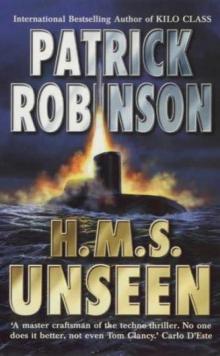 H.M.S. Unseen am-3
H.M.S. Unseen am-3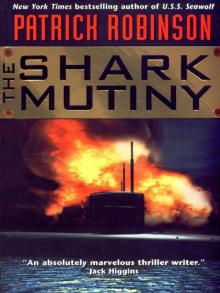 The Shark Mutiny (2001)
The Shark Mutiny (2001)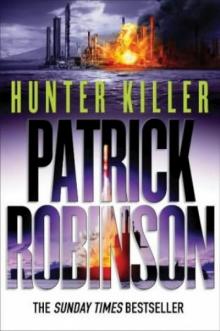 Hunter Killer am-8
Hunter Killer am-8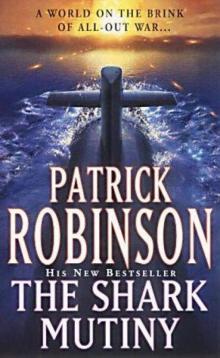 The Shark Mutiny am-5
The Shark Mutiny am-5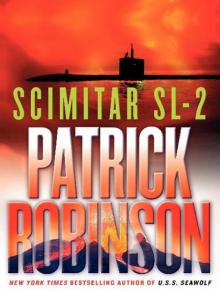 Scimitar SL-2
Scimitar SL-2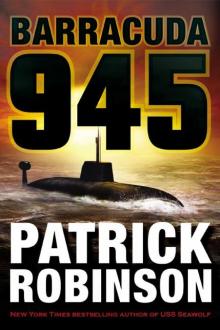 Barracuda 945 am-6
Barracuda 945 am-6 Hunter Killer
Hunter Killer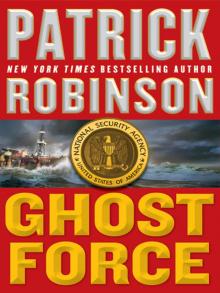 Ghost Force
Ghost Force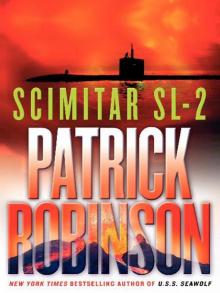 Scimitar SL-2 (2004)
Scimitar SL-2 (2004) Kilo Class am-2
Kilo Class am-2 The Lion of Sabray
The Lion of Sabray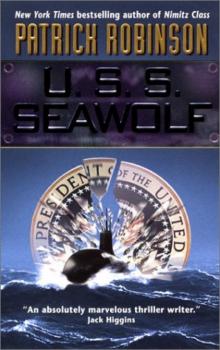 U.S.S. Seawolf am-4
U.S.S. Seawolf am-4 Ghost Force am-9
Ghost Force am-9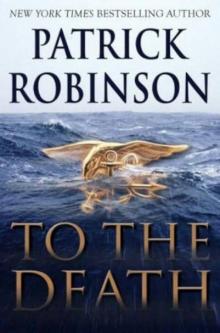 To the Death am-10
To the Death am-10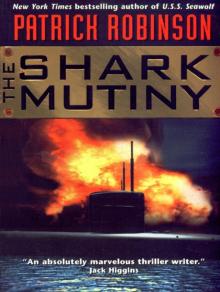 The Shark Mutiny
The Shark Mutiny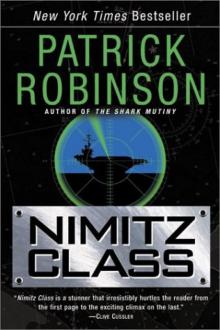 Nimitz Class am-1
Nimitz Class am-1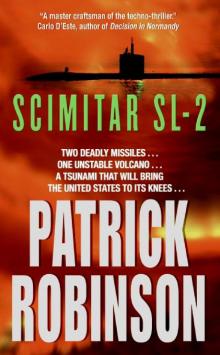 Scimitar SL-2 am-7
Scimitar SL-2 am-7 Barracuda 945
Barracuda 945 Intercept
Intercept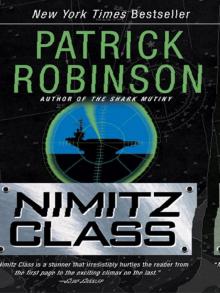 Nimitz Class (1997)
Nimitz Class (1997)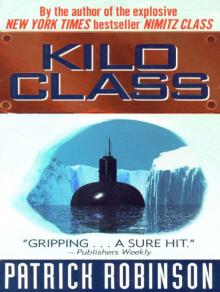 Kilo Class
Kilo Class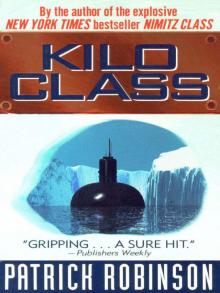 Kilo Class (1998)
Kilo Class (1998) Diamondhead
Diamondhead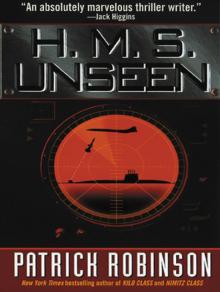 H.M.S. Unseen
H.M.S. Unseen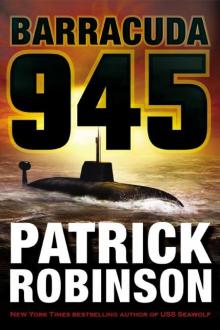 Barracuda 945 (2003)
Barracuda 945 (2003)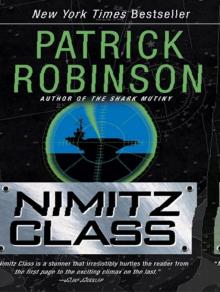 Nimitz Class
Nimitz Class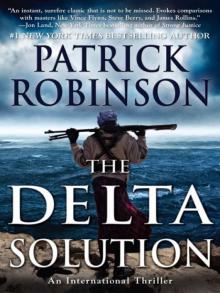 The Delta Solution
The Delta Solution U.S.S. Seawolf
U.S.S. Seawolf